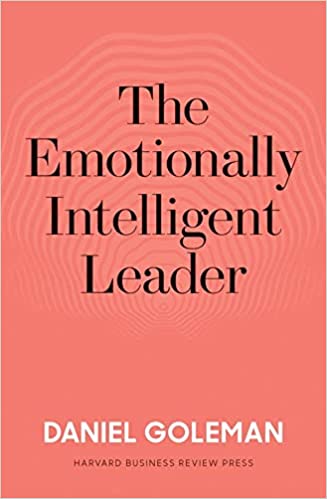The Effortless Experience: Conquering the New Battleground for Customer Loyalty
RATING


The Effortless Experience adopts a strategy that is almost baffling to consider from the viewpoint of Senteo. Rather than “wowing” the customer, Dixon and his colleagues at CEB suggest that businesses simply deliver on the products and services they provide, but in such a manner that it is effortless for the customer.
While an almost contradictory approach, this does present a valid point as consumers are swayed much more readily by negative experiences (as shown through the large margin for detractors in The Ultimate Question 2.0) than by positive ones. As a team, CEB analyzes the common perception that customer delight equals loyalty and effectively strives to debunk it; CEB aims to redirect efforts towards solving the immediate problem: simplifying the customer experience. Just as the name implies, there is a primary goal of promoting how a business can transition towards creating an effortless experience for its customers, and it is by this effortless experience that they earn the future business and mitigate disloyalty.
The Effortless Experience was a challenging book that really made us reevaluate the effectiveness of the current trend towards delighting customers to promote customer loyalty. We were quite interested in the viewpoint that Dixon decided to take when considering the concept of customer loyalty. While not in total agreement with Senteo, there was overlap in the decision to satisfy the customer in order to earn their loyalty. There are clear examples that are backed by research and study, giving readers hard evidence to reference when considering application of the concepts. From a concept standpoint, there are strong positions that enable readers to understand that customer loyalty begins with the understanding of the customer. However, Dixon also includes that the employee and their positions must also be analyzed to assess whether they are capable of addressing customer concerns.
The availability of this information in the book proves invaluable in terms of integrating the ideas into a business. At the heart of the book, the goal is to make the relationship with the customer as effortless as possible, and this is not unlike how we promote the integration of Brand, Communication, Offering, Culture, and Environment in the business. In particular, we appreciated how Dixon includes the use of measurement tools such as their Customer Effort Score which makes the concept more actionable. Specifically in the context of customer interaction, they note the importance of maintaining strong communication and perfect integration of CRM systems, web services, and customer service desks.
Dixon addresses the concept of customer loyalty and how to satisfy customers, yet there are still questions that are left unanswered – such as the public impact of “wow” moments on company perception. Yes, CEB’s data shows that the impact of customer service on loyalty, but it does not fully address the importance of pleasing the customer and ensuring that the relationship is a positive one that continues to grow through ongoing contact. A red flag that appears throughout the book is that the diagrams, models, and researched evidence come almost exclusively from CEB’s own findings. The lack of diversity in scholarly sources almost begs the question as to whether this is sound advice or the lone findings of a company. A glaring issue that exists is the lack of a case study that carefully tracks the differences between a store that is effortless and one that focuses on delighting the customer. While Dixon does effectively attack the position of “wowing” the customer, the internal surveys and studies lack the conclusive details that a real-time study would provide.
Everyone knows that the best way to create customer loyalty is with service so good, so over the top, that it surprises and delights. But what if everyone is wrong?
In their acclaimed bestseller The Challenger Sale, Matthew Dixon and his colleagues at CEB busted many longstanding myths about sales. Now they’ve turned their research and analysis to a new vital business subject—customer loyalty—with a new book that turns the conventional wisdom on its head.
The idea that companies must delight customers by exceeding service expectations is so entrenched that managers rarely even question it. They devote untold time, energy, and resources to trying to dazzle people and inspire their undying loyalty. Yet CEB’s careful research over five years and tens of thousands of respondents proves that the “dazzle factor” is wildly overrated—it simply doesn’t predict repeat sales, share of wallet, or positive wordof-mouth. The reality:
Loyalty is driven by how well a company delivers on its basic promises and solves day-to-day problems, not on how spectacular its service experience might be. Most customers don’t want to be “wowed”; they want an effortless experience. And they are far more likely to punish you for bad service than to reward you for good service.
If you put on your customer hat rather than your manager or marketer hat, this makes a lot of sense. What do you really want from your cable company, a free month of HBO when it screws up or a fast, painless restoration of your connection? What about your bank—do you want free cookies and a cheerful smile, even a personal relationship with your teller? Or just a quick in-and-out transaction and an easy way to get a refund when it accidentally overcharges on fees?The Effortless Experience takes readers on a fascinating journey deep inside the customer experience to reveal what really makes customers loyal—and disloyal. The authors lay out the four key pillars of a low-effort customer experience, along the way delivering robust data, shocking insights and profiles of companies that are already using the principles revealed by CEB’s research, with great results. And they include many tools and templates you can start applying right away to improve service, reduce costs, decrease customer churn, and ultimately generate the elusive loyalty that the “dazzle factor” fails to deliver.
The rewards are there for the taking, and the pathway to achieving them is now clearly marked.
What we are looking at in The Effortless Experience is a different take on customer loyalty; the departure from delighting the customer opens up an additional avenue for businesses to pursue in search of earning repeat business. Essentially, the book aims to build loyalty by decreasing the possibility of disloyalty through customer contact. Businesses without the capacity to regularly delight customers, such as volume retailers as opposed to boutiques, can utilize this information to broaden their loyal customer base. Additionally, the methods discussed in the book offer a low-cost alternative to consistently delighting the customer or staffing for customer contact channels. Most important, however, is the realization that popular methodology like delighting customers may not work for all businesses, and evaluation is required to assess what is the best fit for your company’s needs.

The Effortless Experience is a book that challenges all that we know and understand about delighting the customer through positive customer experiences, but presents valid points with evidence and methodology. With sound research by CEB, the book is rooted in understanding how to make the experience effortless while also providing measurement techniques to gauge progress towards this goal.
See content on this topic

Sales training for front line along with basic development and coaching principles for line management.
Understanding branding and communications from the standpoint of emotional engagement and building relevant and meaningful dialogue with customers.
This course covers a complete view of customer touch points (both physical and virtual) and a unique model for standardizing and managing customer contact models across channels including approaches for customer feedback, quality management, and migration.
Understand how the innovation process changes moving from functionality and channel design to a process focused on creating value for customers.
Experiential Branding & Communications – Improving Brand Integration Through Emotional Engagement.
This course covers a complete view of customer touch points (both physical and virtual) and a unique model for standardizing and managing customer contact models across channels.
Understand the value of a customer-oriented analytics package and how behavioral scenarios can be used to improve profitability through influencing behavior and usage.
To understand the principles of game dynamics and learn how to effectively use the elements of gamification in business: to involve customers, employees and contractors in the process.
Understand the components and features in a complex Customer Relationship Management system (infrastructure, architecture, functionality, etc.) and the uses and benefits for both the business and the customer.
Understanding the range and function of different relationship management processes used to build customer engagement models and manage the quality of customer relationships.
Understand how the innovation process changes moving from functionality and channel design to a process focused on creating value for customers.
Understanding the drivers and mechanics of corporate culture will help any management to design and develop an organizational culture for success and growth.




 Copy Link
Copy Link
 E-mail
E-mail
 LinkedIn
LinkedIn
 Facebook
Facebook
 Telegram
Telegram
 WhatsApp
WhatsApp















 Go Back
Go Back
Leave a Reply
You must be logged in to post a comment.